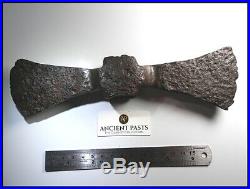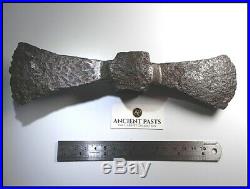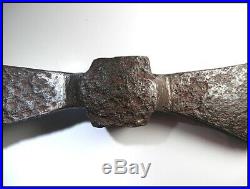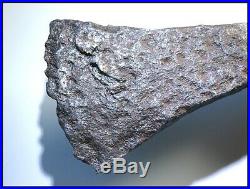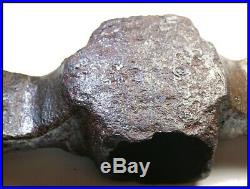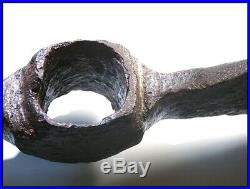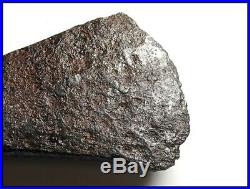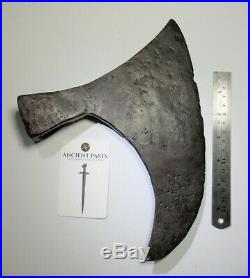

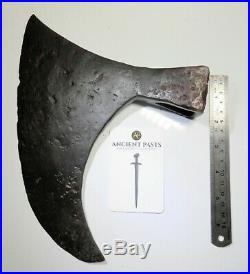

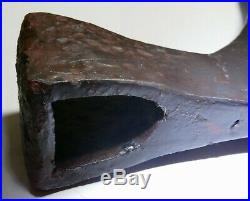
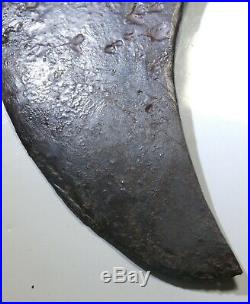

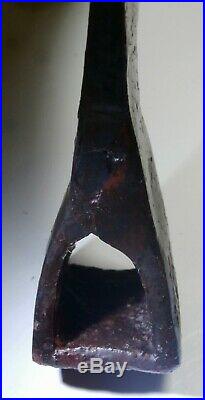

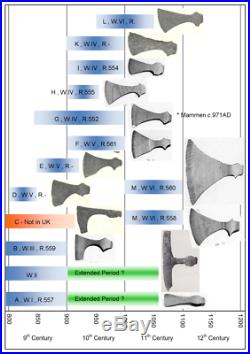

Add To Saved Sellers. Very Rare Early Viking Anglo Dane Broad Battle Axe – Type M 2 Conserved – EF. Hilt to mid blade 19.2 cm: toe to heel blade 26.3 cm: weight 993 grams. Most axes, both in period illustrations and exact artefact, that fall under the description of Danish axe possess type L or type M heads according to Petersens axe typology: Both types consist of a wide, thin blade, with pronounced horns at both the toe and heel of the blade bit: Cutting surfaces vary, but they are generally between 20 and 30 cm [this example falls straight in the middle]. The blade itself is reasonable light and forged thin, making it a superb cutting form: many of these types of axes were constructed with a reinforced blade, typically of a higher carbon steel to facilitate a harder and sharper edge: The rear of the axe at the shaft has a rectangular hammer striking surface, which would allow a devastating shield-wall or armour blow. Extremely Fine Display Grade. The axe has been painstakingly conserved to eliminate oxide deposition: it has then been treated with a museum grade micro-wax to eliminate further oxide development. The axe was recovered in the East Anglia Fens 2007 [northern Cambridgeshire]: The axe was deposited in peat rich alluvium deposits within a drainage section where, the banks had eroded and slumped. The item “Very Rare Early Viking Anglo Dane Broad Battle Axe Type M 2 Conserved EF” is in sale since Tuesday, September 17, 2019. This item is in the category “Antiques\Antiquities\Prehistoric”. The seller is “ancientpasts” and is located in Peterborough. This item can be shipped worldwide.
- Colour: Dark Steel
- Material: Carbonized Steel
- Type: Axes
- Provenance: AP Private Collection formed in the 1990s



